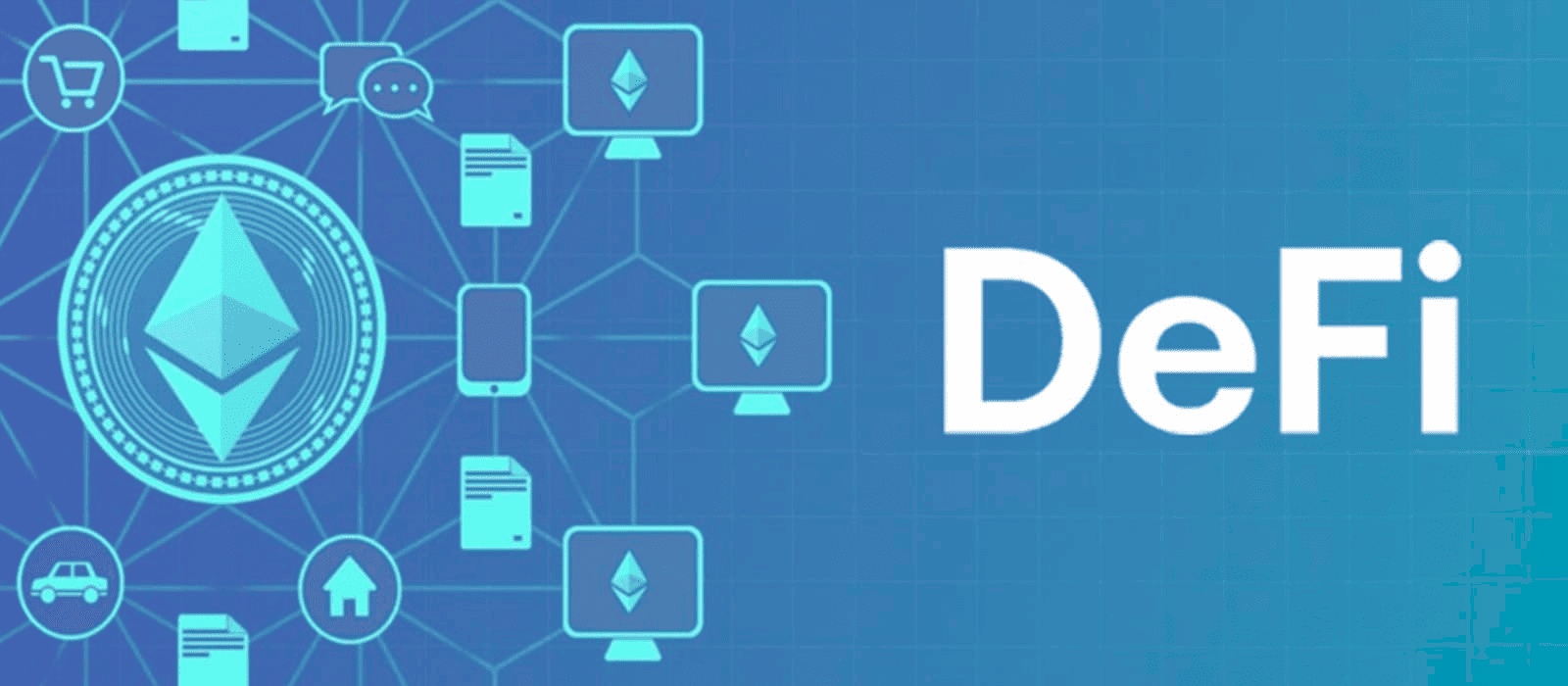Understanding Ethereum’s Smart Contracts
Ethereum DeFi relies heavily on smart contracts, which are self-executing contracts with the terms of the agreement directly written into code. These digital contracts run on the Ethereum blockchain, allowing for trustless transactions without intermediaries. The beauty of smart contracts is their automation and precision, which significantly reduce the chances of human error.
Smart contracts work by executing actions automatically when predetermined conditions are met. For instance, if a user wants to borrow funds, a smart contract can verify the collateral provided and release the funds if all criteria are satisfied. This process eliminates the need for banks or other financial institutions to manage the transaction, which is a cornerstone of Ethereum’s DeFi ecosystem.
Benefits of smart contracts include:
- Transparency: All transactions are recorded on the blockchain, making them visible to everyone.
- Security: Smart contracts are encrypted and immutable, protecting against fraud.
- Cost-efficiency: Reduces the need for intermediaries, lowering transaction fees.
- Speed: Transactions can be completed in seconds, rather than days.
In summary, smart contracts are the backbone of Ethereum’s DeFi landscape, allowing for innovative financial solutions that challenge traditional finance.
The Role of Ethereum in Decentralized Finance (DeFi)
Ethereum powers the DeFi movement by providing a decentralized platform that allows developers to create financial applications that operate without a central authority. This shift from traditional finance to DeFi on Ethereum has been revolutionary, enabling users to lend, borrow, trade, and earn interest on their assets in a peer-to-peer manner.
One key way Ethereum supports DeFi is through its extensive ecosystem of decentralized applications (DApps). These applications leverage Ethereum’s smart contracts to facilitate complex financial transactions. For example:
- Lending platforms: Users can lend their cryptocurrency and earn interest without relying on banks.
- Decentralized exchanges (DEXs): Users can trade cryptocurrencies directly with one another.
- Yield farming: Users can earn rewards by providing liquidity to various DeFi protocols.
Ethereum’s programmability allows developers to create innovative financial instruments that were previously unimaginable. This flexibility contributes to a vibrant DeFi ecosystem, attracting users and investors alike.
Additionally, DeFi on Ethereum offers numerous benefits over traditional finance:
- Accessibility: Anyone with an internet connection can access DeFi services, regardless of location.
- Lower barriers to entry: Users can participate in financial activities without needing a bank account.
- Programmable money: Users can create complex financial agreements that execute automatically.
In conclusion, Ethereum’s role in DeFi is pivotal, as it not only facilitates a wide range of financial services but also empowers users with greater control and autonomy over their assets.
Exploring Ethereum’s NFT Ecosystem
Ethereum NFTs (Non-Fungible Tokens) revolutionize the digital ownership landscape by leveraging the unique capabilities of the Ethereum blockchain. Unlike cryptocurrencies like Bitcoin, which are fungible and interchangeable, NFTs are unique digital assets that represent ownership of a specific item or piece of content. This uniqueness is what makes NFTs stand out on Ethereum.
What makes NFTs unique on the Ethereum blockchain? Here are several key factors:
- Smart Contracts: Each NFT is governed by a smart contract, which ensures that ownership and transaction details are secure and transparent. This means that once an NFT is created, it cannot be altered or duplicated, providing true ownership to the holder.
- Interoperability: Ethereum’s widespread adoption allows NFTs to be easily traded across various platforms and marketplaces. Whether on OpenSea or Rarible, users can buy, sell, or trade their NFTs seamlessly.
- Community and Culture: Ethereum hosts a vibrant community of artists, musicians, and developers who contribute to the NFT ecosystem. This community fosters innovation and creativity, leading to unique digital collectibles and experiences.
Furthermore, Ethereum’s NFTs have enabled artists to monetize their work directly, eliminating intermediaries. This direct connection between creators and consumers has transformed how art, music, and other digital content are valued and sold.
In summary, Ethereum’s NFT ecosystem is characterized by its use of smart contracts, interoperability across platforms, and a thriving community. These elements collectively contribute to the uniqueness and popularity of NFTs on the Ethereum blockchain.
Security and Scalability Challenges of Ethereum
Ethereum faces several security challenges that impact its decentralized finance (DeFi) applications. As more users flock to DeFi services on Ethereum, understanding these security issues becomes crucial for maintaining trust and integrity in the ecosystem.
One of the main security issues facing Ethereum is:
- Smart Contract Vulnerabilities: While smart contracts automate processes, they can also contain bugs or vulnerabilities. If a smart contract is poorly coded, it can lead to exploits, resulting in significant financial losses. For instance, the infamous DAO hack in 2016 exploited a vulnerability in a smart contract, leading to the theft of millions of dollars.
- Network Congestion: As the DeFi sector grows, Ethereum often experiences network congestion, leading to high transaction fees and slower processing times. This congestion can deter users and affect the usability of DeFi applications.
- Phishing Attacks: Users of Ethereum-based applications must remain vigilant against phishing attacks that target their private keys or seed phrases. This risk highlights the importance of security awareness among users.
To mitigate these challenges, developers and the Ethereum community continuously work on upgrades and solutions, such as Ethereum 2.0, which aims to enhance security and scalability. By transitioning to a proof-of-stake consensus mechanism, Ethereum seeks to address issues like energy consumption and transaction speed.
In conclusion, while Ethereum presents innovative opportunities in the DeFi space, it is essential to acknowledge and address the security challenges that come with it. By understanding these issues, users can navigate the DeFi landscape more safely and effectively.
The Future of Ethereum: Upgrades and Innovations
Ethereum is constantly evolving, with upgrades and innovations that aim to enhance its functionality, security, and scalability. One of the most significant upcoming changes is the transition to Ethereum 2.0, which aims to shift from a proof-of-work (PoW) to a proof-of-stake (PoS) consensus mechanism. This transition is expected to reduce energy consumption drastically and improve transaction speeds.
Ethereum 2.0 will introduce several key features:
- Sharding: This will allow the Ethereum network to process many transactions simultaneously, significantly increasing its capacity.
- Beacon Chain: This is a new PoS blockchain that will coordinate the network and manage the staking process.
- Improved Security: With PoS, validators will be incentivized to act honestly, as they risk losing their staked ETH if they attempt to defraud the system.
These upgrades are crucial for the future of Ethereum, especially in the context of DeFi. A more scalable and efficient Ethereum will facilitate even more innovative financial products and services, further solidifying its position as a leader in the DeFi space. As Ethereum continues to grow, we can expect to see more robust applications that leverage its unique capabilities.
In conclusion, Ethereum’s future looks promising with its ongoing upgrades and innovations. The transition to Ethereum 2.0 and enhancements in security and scalability will likely pave the way for a more accessible and efficient DeFi ecosystem.
Building Your First Decentralized Application (DApp) on Ethereum
Creating a decentralized application (DApp) on Ethereum is an exciting endeavor that allows developers to leverage Ethereum’s capabilities. To build your first DApp, follow these essential steps:
- Define Your Idea: Start by conceptualizing what your DApp will do. Identify a problem it will solve or a service it will provide in the DeFi space.
- Learn Solidity: Solidity is the programming language used to write smart contracts on Ethereum. Familiarize yourself with its syntax and features to develop your DApp effectively.
- Set Up Your Development Environment: Install necessary tools such as Node.js, Truffle, and Ganache. These tools will help you compile, deploy, and test your smart contracts.
- Develop Smart Contracts: Write the smart contracts that will power your DApp. Ensure they are secure and efficient, as vulnerabilities can lead to significant financial losses.
- Build the Frontend: Create a user-friendly interface for your DApp. You can use frameworks like React or Angular to develop the frontend that interacts with your smart contracts.
- Deploy Your DApp: Once your DApp is ready, deploy it to the Ethereum network. You may choose to deploy on the mainnet or testnet based on your testing needs.
- Promote and Maintain: After launching, promote your DApp to attract users. Regularly update and maintain it to ensure it remains secure and functional.
Building a DApp on Ethereum can be a rewarding experience, offering the opportunity to contribute to the growing DeFi ecosystem. By following these steps, you can create a valuable application that harnesses the power of decentralized finance.




